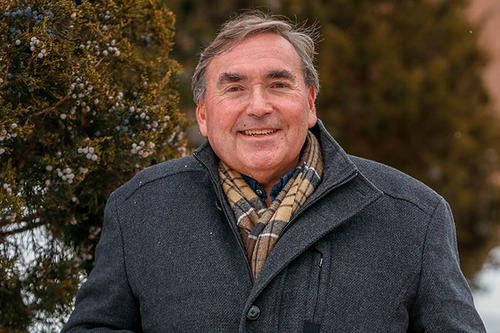
In November, Tadd Johnson was named the first-ever senior director of American Indian Tribal Nations Relations for the University of Minnesota System.
In this new role, Johnson will be the liaison between the University and regional tribal nations, creating pathways for better communication and understanding, and much stronger collaborations.
It would be hard to find someone with better qualifications. Johnson has more than three decades of leadership and service in Indian law and policy. He served as a tribal attorney for more than 20 years, as a tribal court judge and administrator, and five years with the U.S. House of Representatives, becoming counsel to the Subcommittee on Native American Affairs. In 1997, President Clinton appointed Johnson to chair the National Indian Gaming Commission.
He’s an enrolled member of the Bois Forte Band of Chippewa, and professor and director of the master of tribal administration and governance program at the University of Minnesota Duluth.
Johnson answered a few questions about his vision for the position and how the University of Minnesota can work better with tribal nations.
Q: Given your history in law and policy and your work in D.C., what draws you to this new position?
“In each of the jobs I’ve taken, whether it was tribal attorney or chairing the gaming commission or going to UMD and starting the programs I did, I saw there was a need for some unique skills. Occasionally these opportunities come along where somebody will say to me, ‘You’re the guy! You can do this!’
“I do hope I can do the University some good, and my number one priority is to do some good for Indian Country. That’s who I’ve always been working for no matter what position I’ve held.”
Q: What’s important for the University in working with American Indian students and staff?
“The recruitment of students, faculty, and staff is essential. It has to be an ongoing process, and retaining students (through entities like Circle of Indigenous Nations in the Twin Cities and the American Indian Learning Resource Center at UMD) is absolutely essential. Retaining faculty is also important. We probably have one of the top American Indian Studies departments in the country on [the Twin Cities] campus.”
Q: What do you think are some opportunities for working with Minnesota tribal nations?
“There’s everything across the board from soup to nuts that they’ve given me [to consider]. “We have one of the world’s great schools of public policy in the Humphrey School. They’re very interested in expanding their relationship with American Indian tribal governments, and to me that’s a win-win.
“Also, the Law School has had incredible people here over the years. I think there could be a synergy there between the Law School and the Humphrey School. Likewise, the Carlson School. Upwards of 70 percent of the businesses in rural Minnesota are somehow tied to Indian gaming and Indian tribes, and Indian casinos have become economic engines in rural Minnesota.”
Q: What barriers does the University of Minnesota face in enhancing or, in some cases, repairing connections with tribes?
“Let me approach that from this standpoint. I see this as a moment in Minnesota history where we can break through barriers. If there’s leadership at the top; if there’s a Tim Walz and a Peggy Flanagan (Minnesota’s governor and lieutenant governor) and a Joan Gabel and a Michael Goh (VP for equity and diversity), we just smashed through a bunch of barriers. Now it’s up to me to create an opportunity for the Native voice to be heard. And it’s not my voice; it’s their voices that the University needs to hear.”
- Categories:
- Law and Policy




